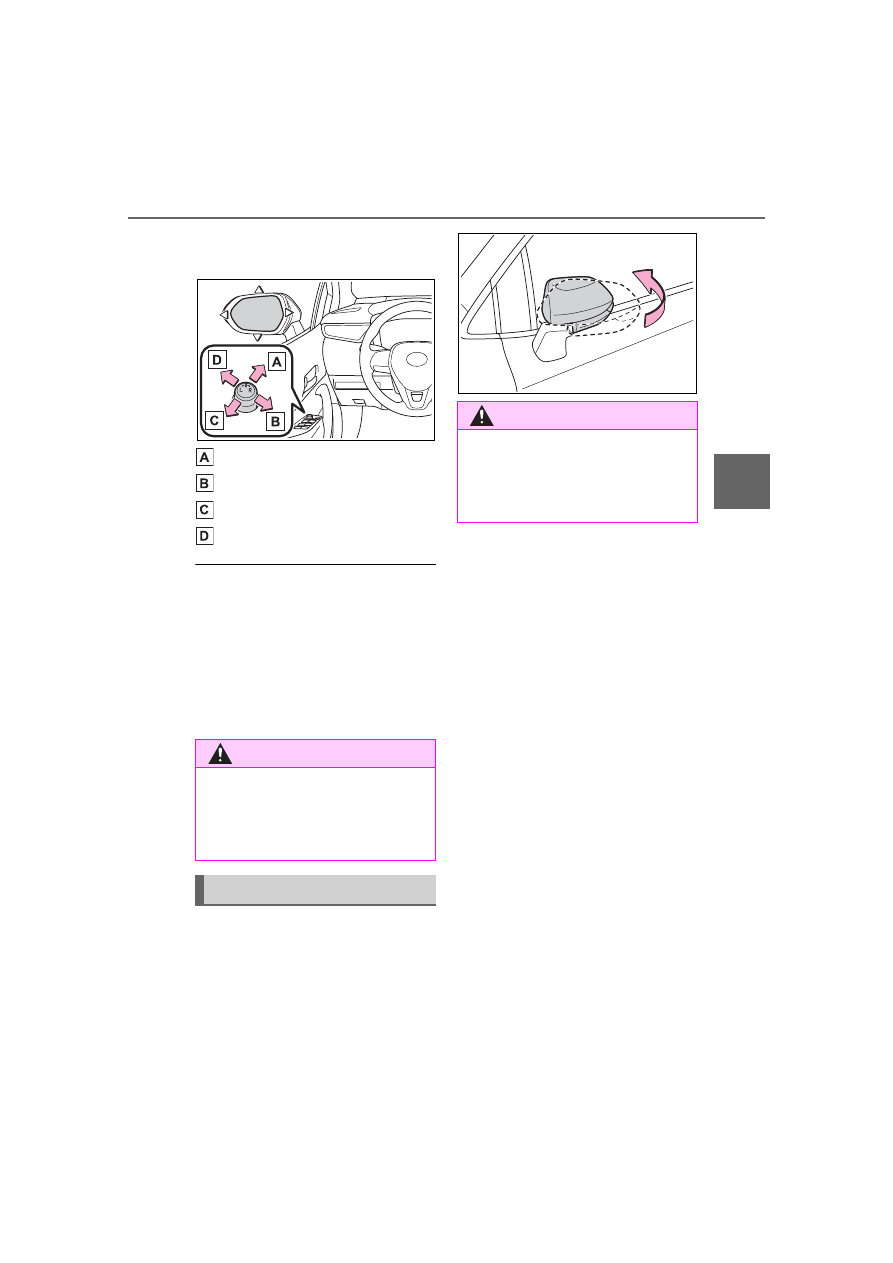Toyota Corolla Hybrid (2021 year). Manual in english - part 3

141
3-4. Adjusting the steering wheel and mirrors
COROLLA HV_U
3
Before driv
ing
2
To adjust the mirror, operate
the switch.
Up
Right
Down
Left
■
Mirror angle can be adjusted
when
The power switch is in ACC or ON.
■
When the mirrors are fogged up
The outside rear view mirrors can
be cleared using the mirror defog-
gers. Turn on the rear window
defogger to turn on the outside rear
view mirror defoggers. (
Push the mirror back in the
direction of the vehicle’s rear.
WARNING
■
When the mirror defoggers
are operating
Do not touch the rear view mirror
surfaces, as they can become
very hot and burn you.
Folding the mirrors
WARNING
■
When a mirror is moving
To avoid personal injury and mir-
ror malfunction, be careful not to
get your hand caught by the mov-
ing mirror.